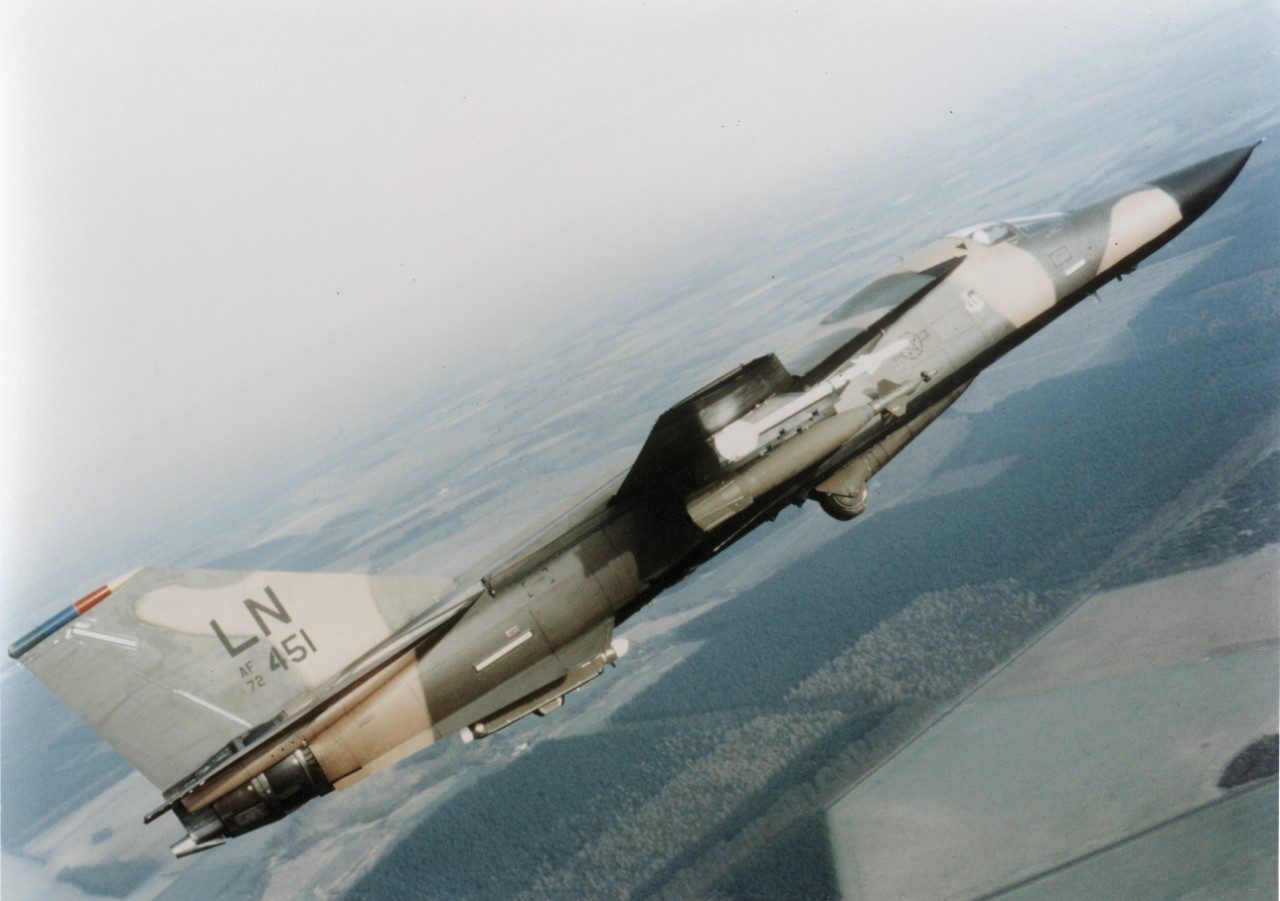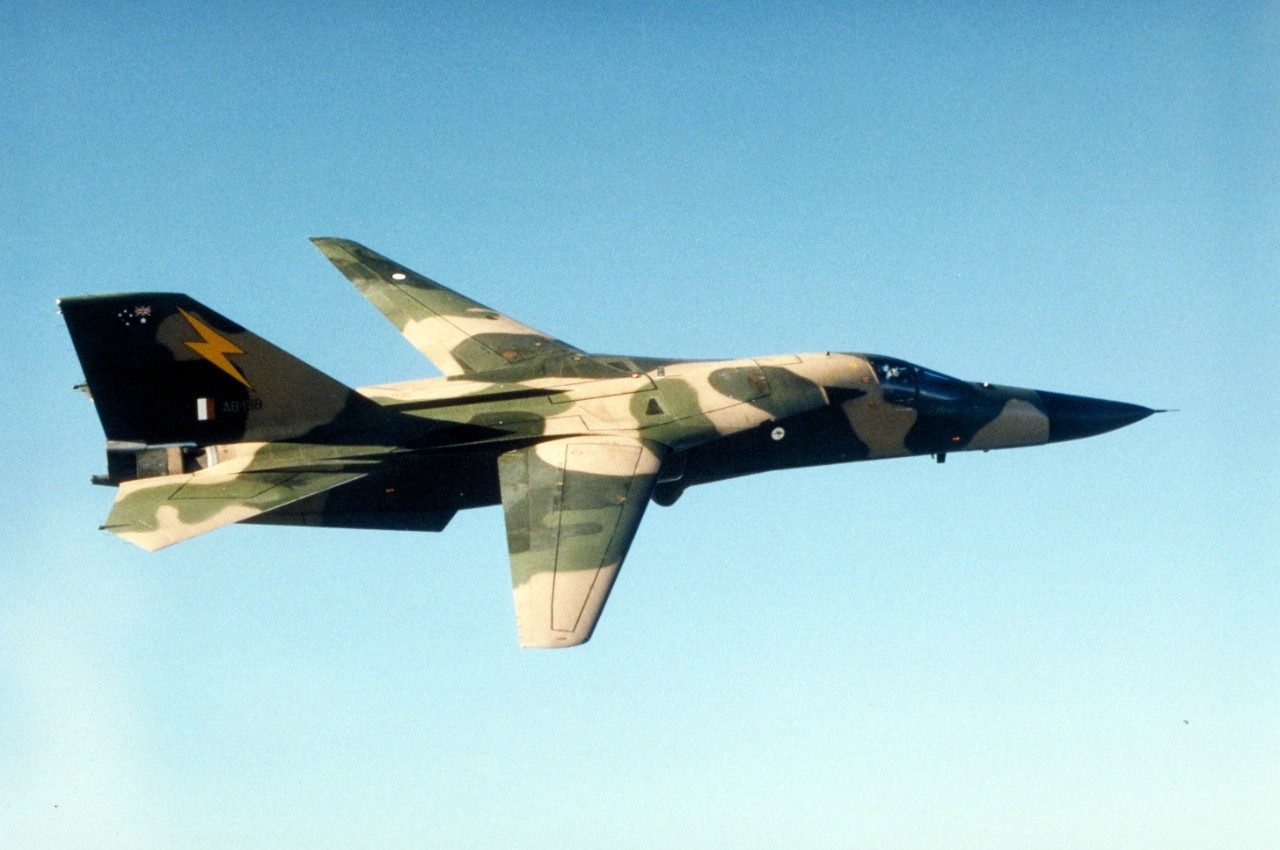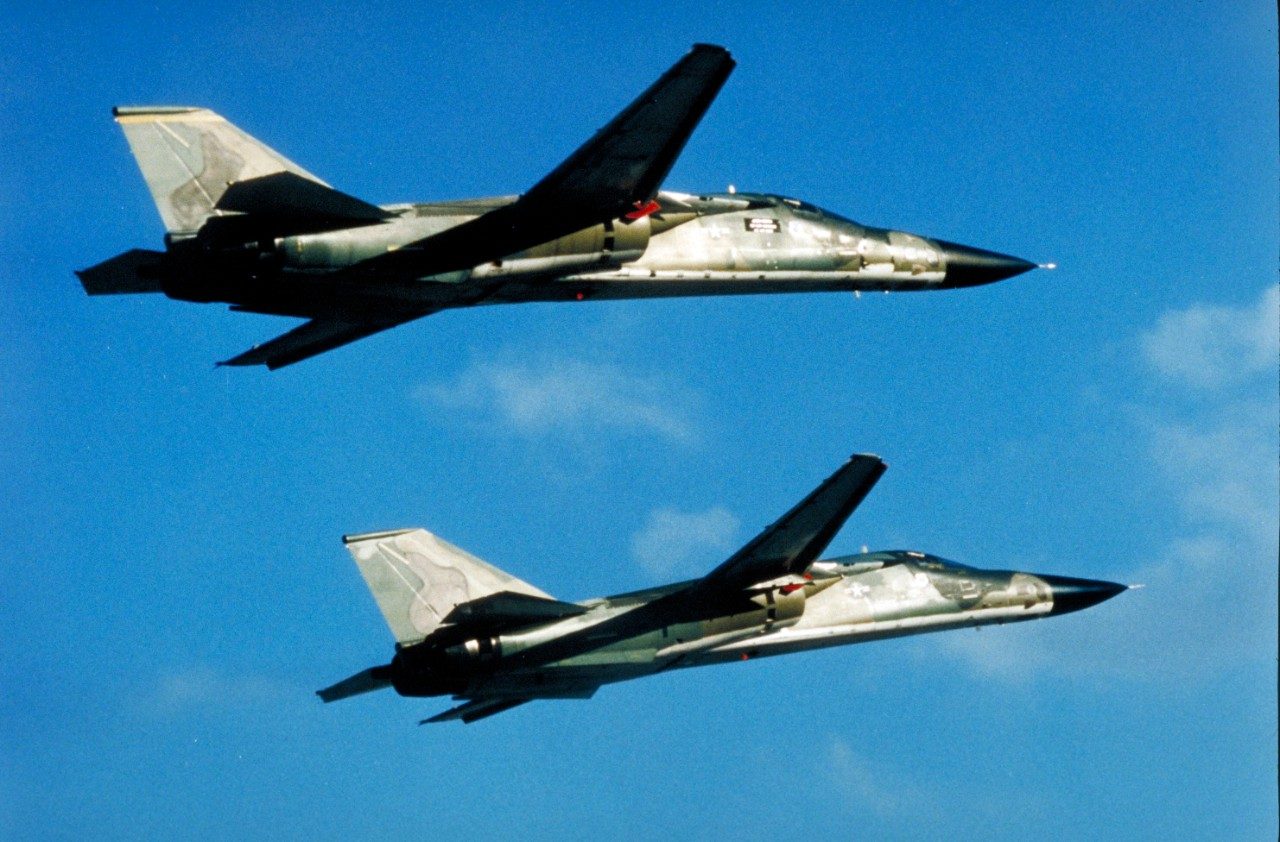General Dynamics won the US Department of Defense contract in 1962 to develop a supersonic aircraft under a program called TFX. This airplane, later designated F-111, would be the first in history to incorporate specific design features to make it capable of performing in multiple roles.
The F-111 is the first production airplane with a variable sweep wing—a wing configuration that can be changed in flight. The wing provided outstanding aerodynamic efficiency. With wings fully extended, the F-111 could take off and land in as little as 2,000 feet. With wings fully swept back, it could reach supersonic speeds at high or low altitudes. At high altitudes, the F-111 could fly more than 2.2 times the speed of sound. At low altitudes, the F-111 could fly supersonic speeds hugging the ground with its terrain-following radar. The F-111 could also fly transoceanic distances without refueling.

The F-111 set a record for the longest low-level supersonic flight (172 miles at less than 1,000 feet altitude) on November 9, 1966. It was also the first tactical aircraft to cross the Atlantic from the United States to Europe without refueling (in May 1967).
The F-111 first went into combat over Vietnam beginning in the late 1960s, being flown as a penetrating bomber in both high- and low-altitude missions. Nearly two decades later, US Air Force F-111F crews from RAF Lakenheath, England, used the highly accurate Pave Tack laser-guided bombing system against terrorist targets in Libya during Operation El Dorado Canyon.

In January 1991, the F-111 went to combat again, in the initial bombing raids of Operation Desert Storm. A total of 110 F-111s participated in nearly 5,000 sorties in the Gulf War in strategic bombing, ground attack and electronic warfare missions. With its Pave Tack system, the F-111F attacked factories and other high-value military targets. F-111s were also credited with destroying more than 1,500 tanks and armored vehicles—operations that were known as “tank plinking.”
F-111 crews operated almost exclusively at night in the Gulf War. The aircraft dropped the bombs that stopped the flow of oil into the Gulf after Saddam Hussein opened pipelines to wreak environmental damage during the war. An unarmed EF-111 earned the first aerial victory of Desert Storm when its defensive maneuvering caused a pursuing Iraqi fighter pilot to fly into the ground. The F-111 was also used to drop the first GBU-28 bunker-busting 5,000 pound bombs. Those weapons had been developed in a matter of weeks to meet a critical need.

The F-111 was flown for the first time on December 21, 1964. In October 1967, the first version was delivered to the USAF Tactical Air Command at Nellis AFB, Nevada. Two years later, the first production bomber version was turned over to the Strategic Air Command at Carswell AFB in Fort Worth, Texas. A total of 562 F-111s were built. The first rolled off the production line on October 15, 1964. The last was produced in 1976.
The operational career of the F-111 came to an end on December 3, 2010 at RAAF Amberley near Brisbane, Australia, as a crew in an F-111C (serial number A8-125) of the Royal Australian Air Force touched down for the aircraft’s last landing. The RAAF had operated the F-111 since 1973. A8-125 was the first F-111C to land at Amberley that year.




